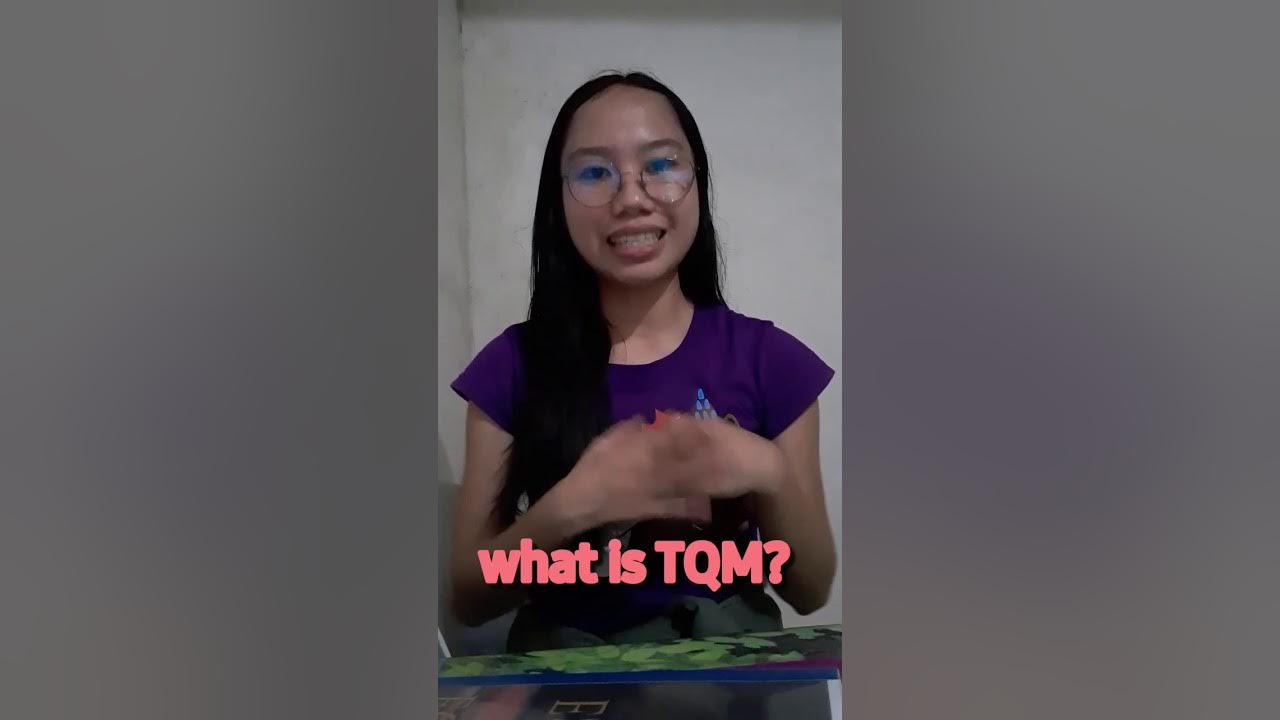Deming, Juran & Crosby: Contributors to TQM (Total Quality Management)
Summary
TLDRThe video script explores Total Quality Management (TQM), highlighting the contributions of W. Edwards Deming, Joseph Juran, and Philip B. Crosby. TQM emphasizes re-engineering processes to meet customer expectations while considering employee and supplier relationships. Deming's 14 points, Juran's 10 steps for quality improvement, and Crosby's four absolutes of quality management are discussed, showcasing their impact on enhancing product and service quality. The script uses the example of Beefy's Burgers to illustrate TQM's practical application, emphasizing continuous improvement and adherence to quality standards.
Takeaways
- 🛠️ Total Quality Management (TQM) is a comprehensive approach to improving products and services by re-engineering processes and systems to meet customer expectations while considering employee and supplier relationships.
- 🌟 W. Edwards Deming, Joseph Juran, and Philip B. Crosby are key figures in the development of TQM, each contributing different aspects to the philosophy and practice of quality management.
- 📊 Deming's philosophy led to the creation of the 14 Points of TQM, emphasizing management's role in redesigning processes and systems for continuous improvement, planning, and acting on feedback.
- 🍔 At Beefy's Burgers, Deming's approach was applied by surveying customers and employees to identify product weaknesses and implementing changes to improve the quality and taste of the burgers.
- 🔄 Deming's Plan-Do-Check-Act (PDCA) cycle is a continuous process of improvement, where checkpoints monitor changes and management takes swift action to correct issues and improve quality.
- 📈 Joseph Juran's approach to quality control focuses on management decision-making, quality planning, and quality improvement, starting with a commitment from the top down and involving a highly trained staff.
- 🕵️♂️ Juran's 10 steps to quality improvement involve building awareness, setting goals, and planning for improvement, with a focus on management's role in driving quality initiatives.
- 💼 Philip B. Crosby redefined quality as conformity to industry or organizational standards that align with customer needs, emphasizing that quality is not about flawlessness but meeting set standards.
- 📝 Crosby's four absolutes of quality management include defining quality, focusing on prevention, setting non-arbitrary performance standards, and measuring quality by the cost of non-conformance.
- 📉 Crosby's perspective on TQM at Beefy's involved analyzing the cost of poor quality and ensuring that the burgers meet the standards set by the organization, not just high-end standards.
- 🔑 In summary, TQM is a customer-focused approach that requires total organizational involvement, adherence to quality standards, and a continuous pursuit of improvement to remain competitive.
Q & A
What is Total Quality Management (TQM)?
-TQM is an approach to serving customers that involves the total re-engineering of processes and systems to improve products and services in the way customers expect, while also considering the needs of employees and relationships with suppliers.
How did W. Edwards Deming contribute to TQM?
-W. Edwards Deming worked with Japanese automobile manufacturers post-World War II to improve product quality, leading to the development of his 14 points of TQM, which emphasize redesigning processes and systems for continuous improvement.
What are the key components of Deming's 14 points of TQM?
-The key components include designing quality products and services, reducing waste, increasing quality, decreasing production costs, and the plan-do-check-act (PDCA) cycle for continuous improvement.
How did Joseph Juran's approach to TQM differ from Deming's?
-Joseph Juran emphasized that TQM begins at the top of an organization and works its way down, focusing on management decision-making, quality planning, quality control, and quality improvement.
What are the 10 steps to Quality Improvement developed by Joseph Juran?
-Juran's 10 steps involve building awareness, setting goals, planning for improvement, training staff, controlling quality, measuring quality, and continuously pursuing perfection through management analysis and recognition.
What is Philip B. Crosby's definition of quality?
-Crosby defined quality as conformity to standards set by the industry or organization that must align with customer needs.
What are Crosby's four absolutes of quality management?
-The four absolutes are: quality is defined as conformance to standards, the system for quality is prevention, the performance standard is not arbitrary and must be without defect, and the measurement of quality is the price of non-conformance.
How did Deming apply TQM principles at Beefy's Burgers?
-Deming surveyed customers and employees, improved grilling techniques, discussed alternatives with suppliers, and set a timing schedule for burger orders to ensure quality and customer satisfaction.
What challenges did Beefy's Burgers face when implementing TQM?
-During busy times, the customized burger system was not feasible, leading to long lines and customer complaints. The challenge was to maintain quality while improving efficiency.
How did Juran's management approach impact the night shift at Beefy's?
-Juran set the standard for quality during his night shift by training each employee on how to properly make a burger, emphasizing the importance of quality planning and control.
What was Crosby's role in implementing TQM at Beefy's Burgers?
-Crosby worked the register and used the restaurant as a field study on TQM, focusing on the cost of poor quality and ensuring that the burgers met the standards set by Beefy's.
Outlines

This section is available to paid users only. Please upgrade to access this part.
Upgrade NowMindmap

This section is available to paid users only. Please upgrade to access this part.
Upgrade NowKeywords

This section is available to paid users only. Please upgrade to access this part.
Upgrade NowHighlights

This section is available to paid users only. Please upgrade to access this part.
Upgrade NowTranscripts

This section is available to paid users only. Please upgrade to access this part.
Upgrade Now5.0 / 5 (0 votes)





